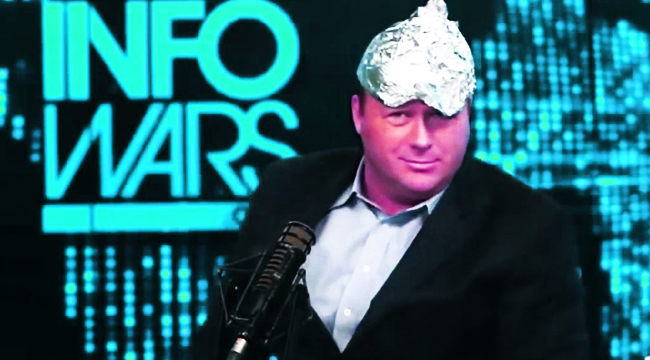
Conspiracy theories were what kept YouTube going, in its early days. Videos like the notorious Loose Change were shared millions of times, eventually allowing the rise of sites like InfoWars. But in the wake of the fake news epidemic, and criticism as conspiracy videos claiming Parkland, FL shooting survivors were “crisis actors” shot up the site’s charts, YouTube announced a new initiative that would pair Wikipedia links with conspiracy theory videos. One problem: Nobody at YouTube bothered to tell the Wikimedia Foundation, which runs Wikipedia, and it’s beginning to look like YouTube isn’t trying to fix its problems, just pass the buck.
Announced at SXSW by YouTube’s CEO, Susan Wojcicki, the proposed idea is simple. If you search Google for videos about common conspiracy theories, whether it’s fluoridation in the water as mind control or that Alex Jones is secretly Bill Hicks, the video will prominently place a Wikipedia link on the site for users to click through and read the thorough debunking.
Today, the Wikimedia Foundation weighed in on Twitter, and pointed out that not only were they not informed of this, they have some serious problems with YouTube’s solution:
As @krmaher says, "The Wikipedia editors are often on the front lines of challenging conversations about truth and facts." https://t.co/PExyT2j3yb
— Wikimedia Foundation (@Wikimedia) March 14, 2018
And community member @phoebe_ayers: "It's not polite to treat Wikipedia like an endlessly renewable resource with infinite free labor; what's the impact?" https://t.co/AFL3nC391R
— Wikimedia Foundation (@Wikimedia) March 14, 2018
What goes unmentioned here, possibly out of politeness, is that this means Wikipedia will be bombarded by conspiracy theorists, sticking the site’s massive volunteer editing force with the job of filtering out bad citations and outright graffiti. As funny as it is when somebody adds politicians to the list of known invertebrates, a volunteer does need to go in and fix that.
It’s also worth noting that you can lead a horse to water, but you can’t make them drink. As anybody who’s attended a Thanksgiving dinner knows, human beings aren’t easily swayed from their opinions once they form, even in the face of contradictory evidence. In fact, proving definitively a person’s opinion or belief is wrong is more likely to reinforce that belief. Just because the link is there, doesn’t mean it’ll be clicked. And even if the link is there, that still, fundamentally, doesn’t address the problem.
Legally speaking, the Wikimedia Foundation can’t just tell YouTube to go away. Wikipedia is freely licensed as part of its mission, so YouTube can link through to Wikipedia entries however it wants. But it’s quickly become clear that, much like Twitter is desperate to change verification so it doesn’t seem like an endorsement and Facebook would prefer users train themselves to spot fake news instead of booting fraudsters from the site, that to some degree, YouTube wants to have its cake and eat it too. It wants the clicks, and ad views, of conspiracy theory content, but it doesn’t want any of the baggage or negative press that comes with it.
Unfortunately for YouTube, the only way to solve its conspiracy theory problems is likely to confront them directly.
